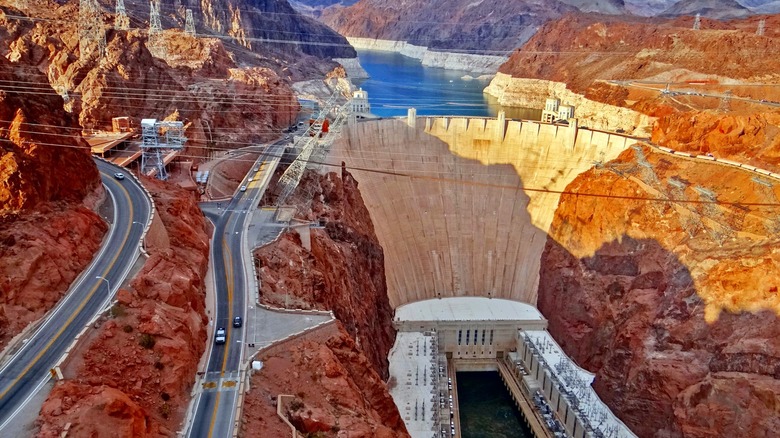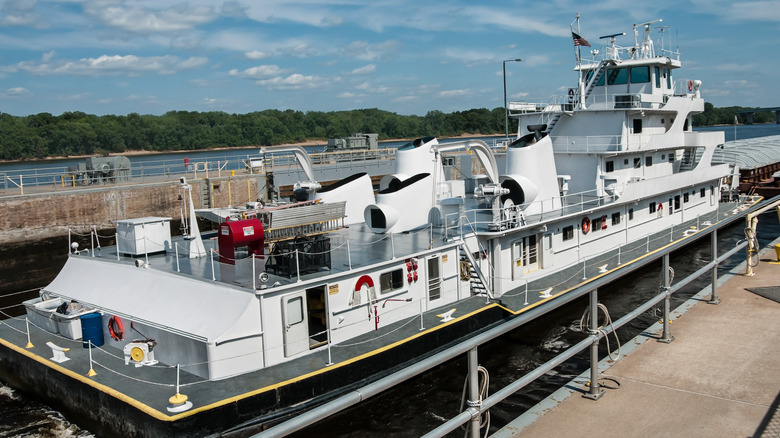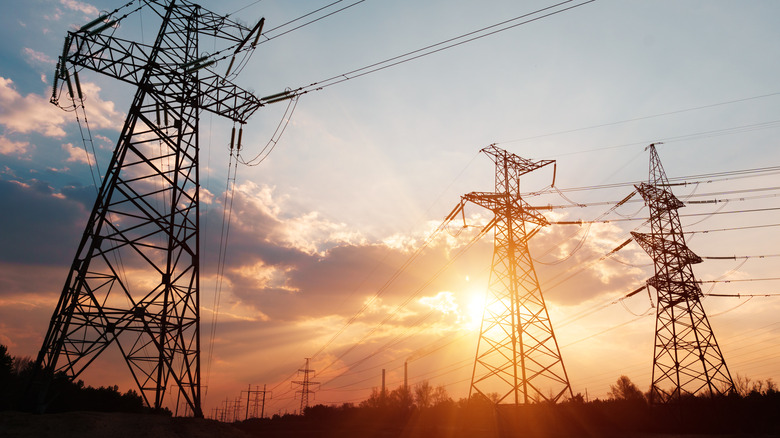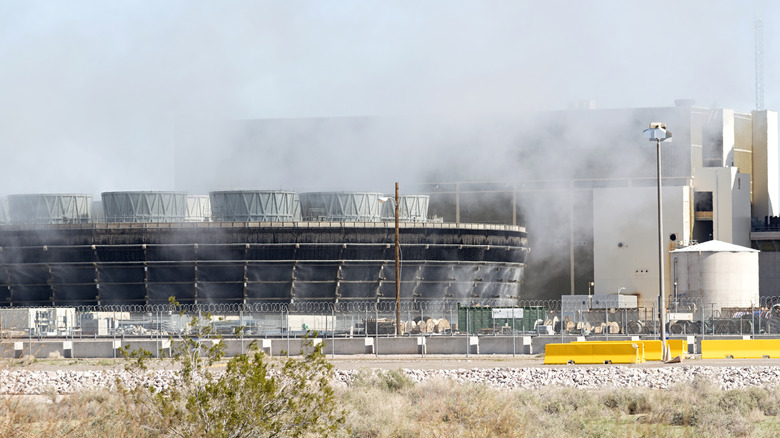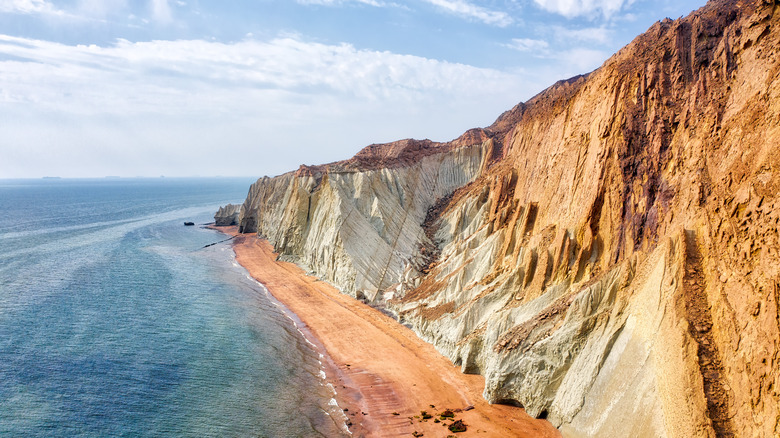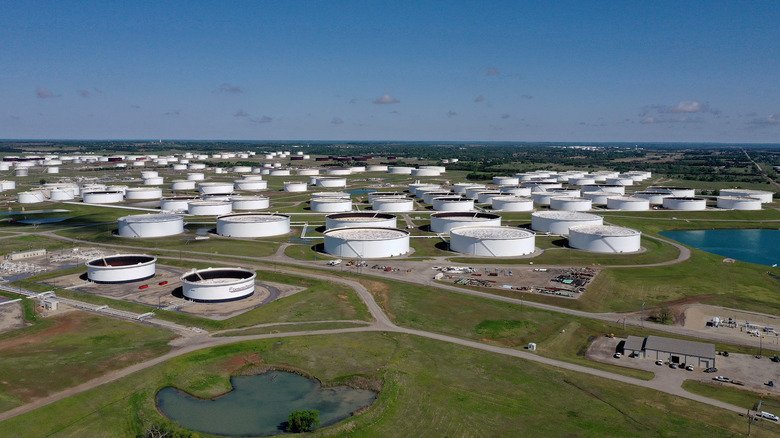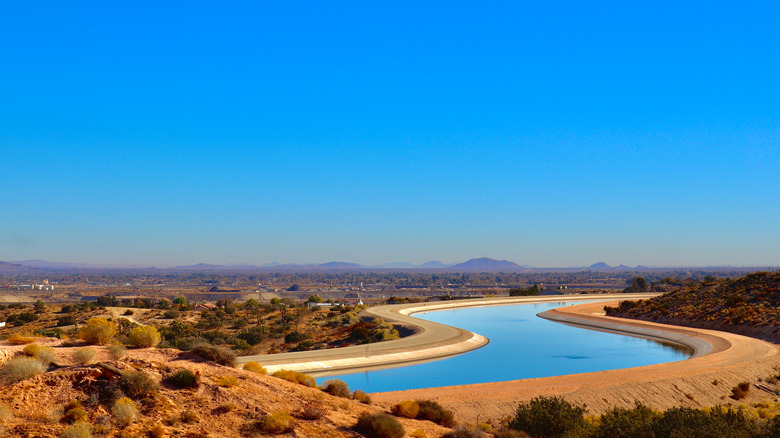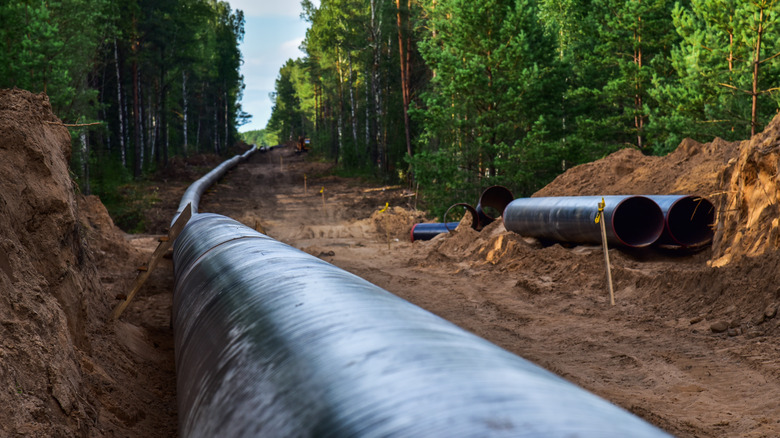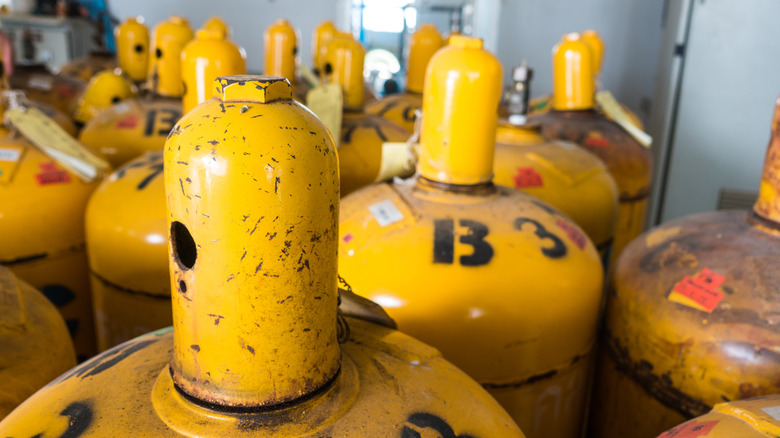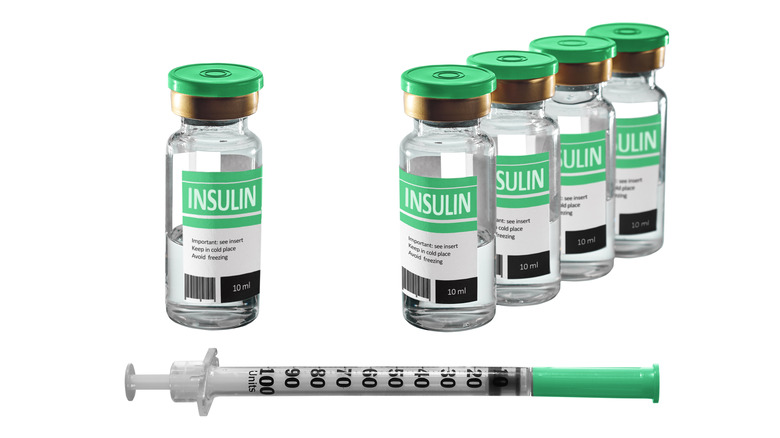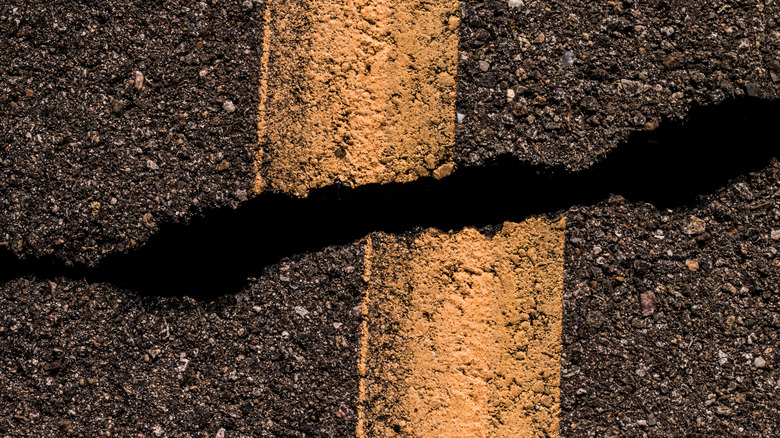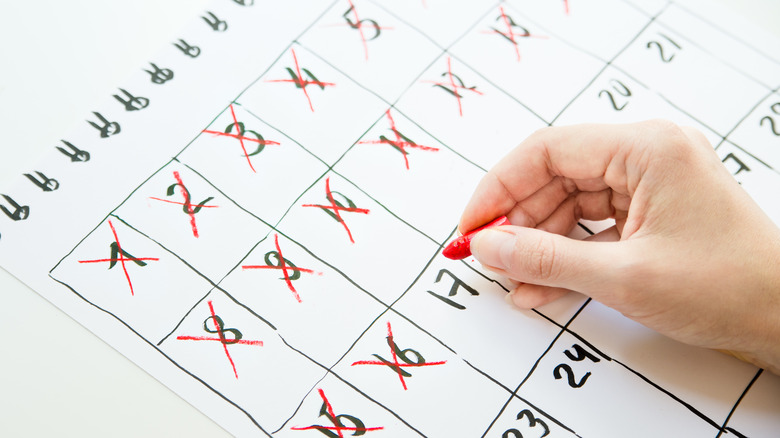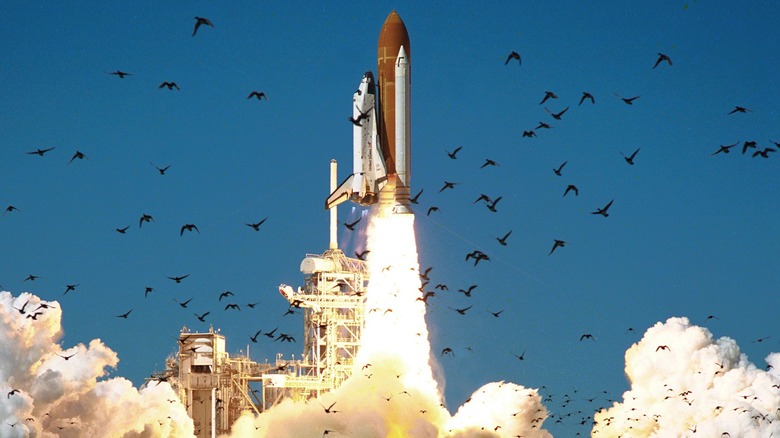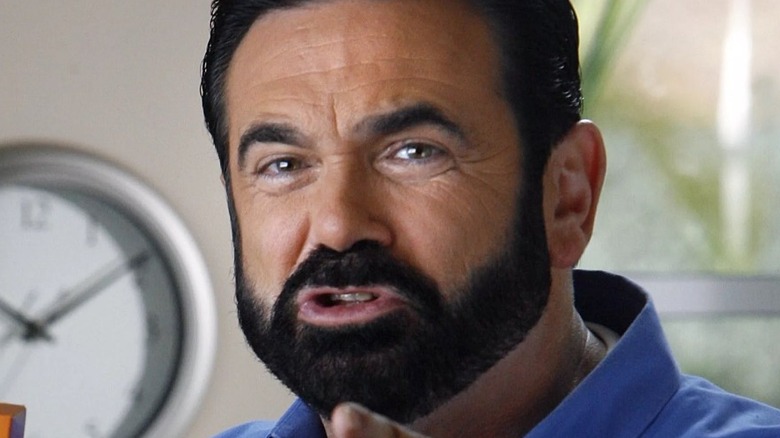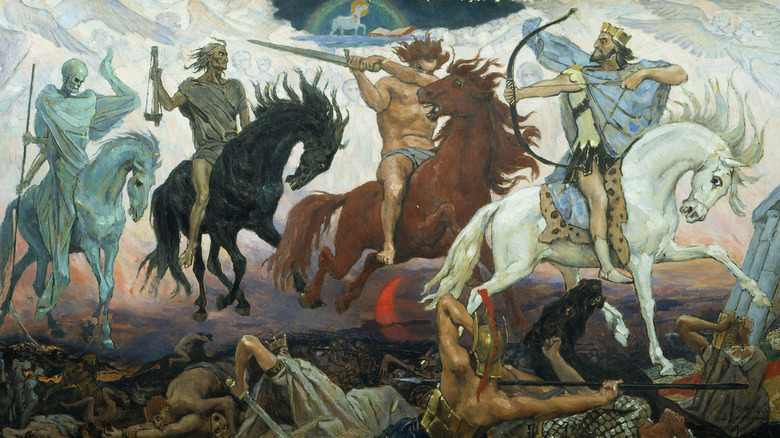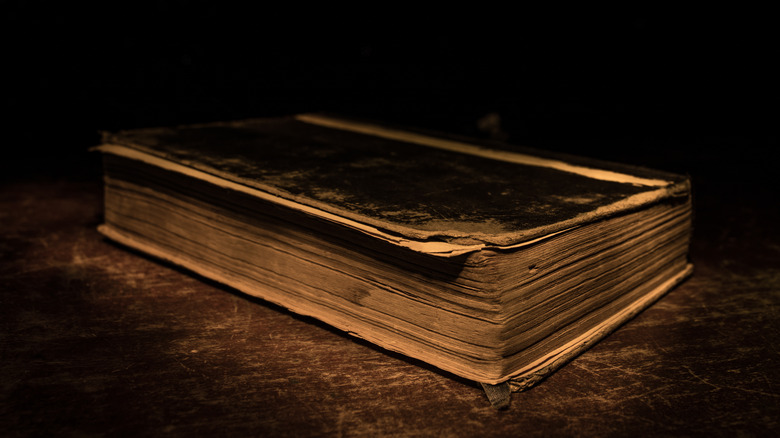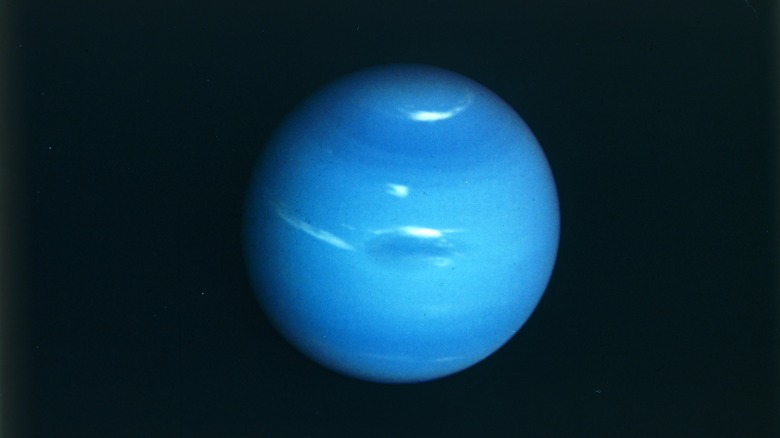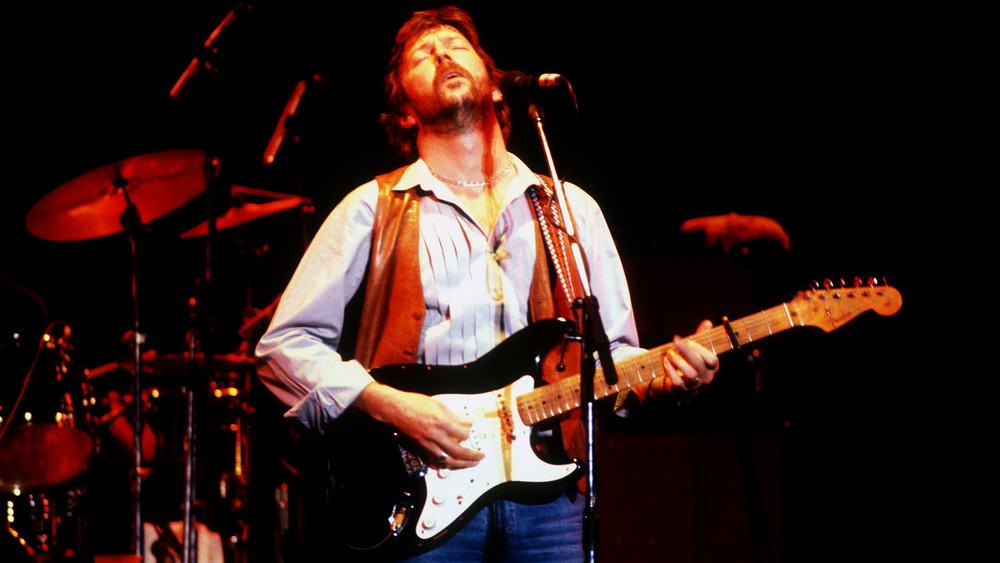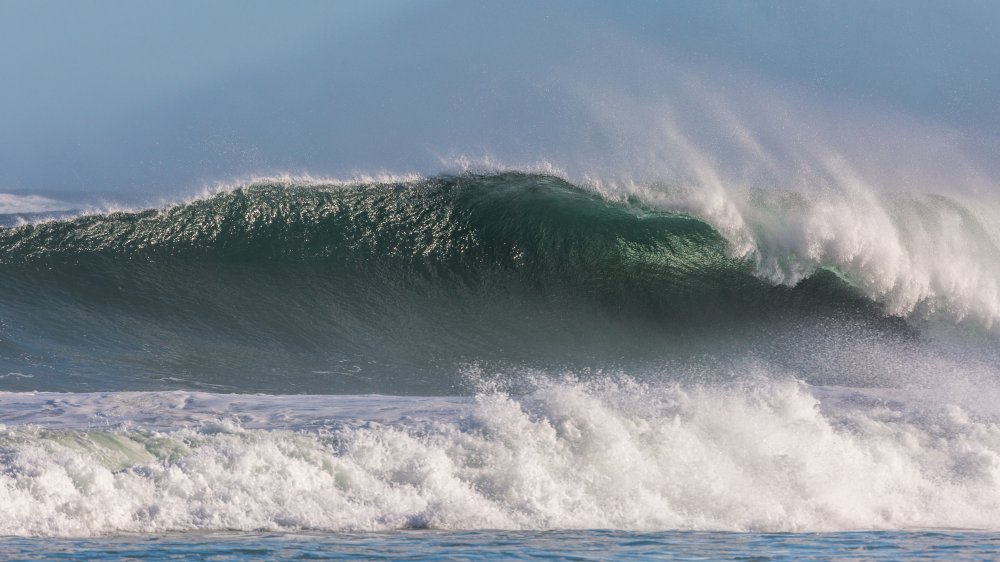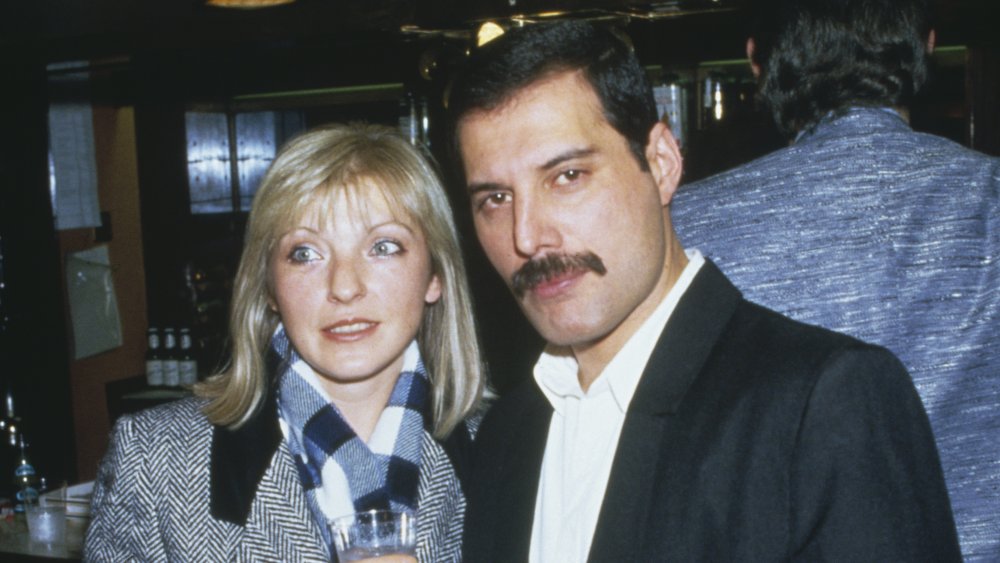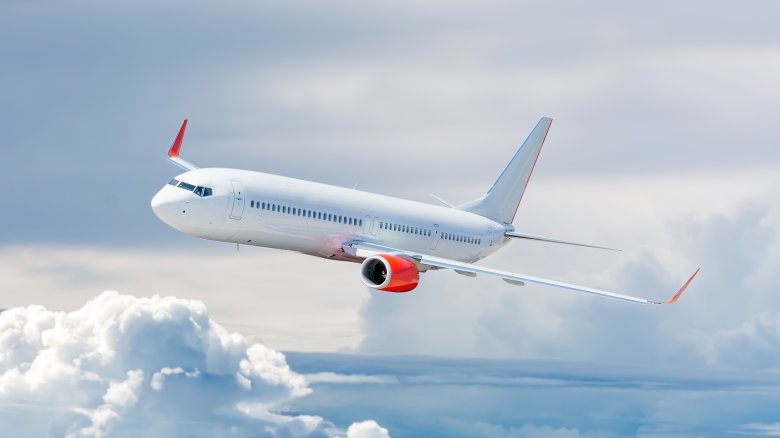
If These Structures Ever Broke, The US Would Be In Serious Trouble
One of Julian Assange’s most infamous Wikileaks was the one where he released a classified list of a bunch of potential infrastructure targets, you know, in case terrorists didn’t already have one of their own. While it’s probably true that any terrorist worth his weight in explosives already knew about all of these places (it’s not like any of them were in secret locations or were engaged in covert manufacturing operations or anything), it was still a little bit like giving a serial killer detailed directions to your house, and your mom’s house, and the houses of all your closest friends. It’s not like your serial murdering nemesis can’t just use a GPS, but why would you want to make it any easier?
Anyway, since the information is already out there, this list of things the United States really doesn’t want failing or breaking or shutting down isn’t likely to inspire any brand-new plots, so read on and try not to worry. If terrorists were going to take down any of these important structures, they’re probably already formulating plans, so your best bet is really to just move to Antarctica. So far, no one is aware of any terrorist plots involving emperor penguins and hey, in a few years climate change is going to turn it into a tropical paradise anyway.
Hoover Dam might make a few feet wet
When Hoover Dam was completed in 1935, it was the largest dam in the world and a testament to human ingenuity. It took 7 million tons of concrete to create the colossal dam, which is 660 feet thick at the bottom. The construction project provided jobs for 21,000 people and only killed 111 of them. Today, Hoover Dam holds three and a half trillion gallons of water. That water sustains more than 15 million people and irrigates 2 million acres of agriculture. And at least 1.3 million people rely on the hydroelectric power the dam produces.
The Las Vegas Advisor is careful to say that Hoover Dam is not currently in any danger of failure. But let’s say there was a massive earthquake, or space aliens decided to use it for target practice. Failure of Hoover Dam would have some serious consequences. If you just think in terms of lost services, the first consequence would be power failure for 1.3 million people. The next would be loss of clean drinking water for 15 million people, including the entire city of Las Vegas. But the most catastrophic consequence of a Hoover Dam failure would be the displacement of all those three and a half trillion gallons of water. That’s enough water to cover 10 million acres in a foot of water. On its way out to the Gulf of California, the water would destroy communities in Arizona, Nevada, California, and Mexico.
The Mississippi River Ship Channel connects 31 states to the rest of the world
Unless you live in Mississippi, there’s a good chance you’ve never heard of the Mississippi River Ship Channel, and there’s also a really good chance that you’ve eaten something or used a product that was shipped into the Port of South Louisiana — the largest port in the Western Hemisphere — or one of three other major ports this important waterway serves. The Mississippi River Ship Channel is particularly important for exports. According to RealClearPolicy, 60% of all of America’s grain exports pass through the channel, and if it ever failed, broke, or shut down, it would mean trouble for a lot of farmers who depend on being able to sell their products in the world marketplace.
The Mississippi River Ship Channel was built in the mid-20th century as an alternative, shorter route between the Gulf of Mexico and the Port of New Orleans. Today it serves as a sort of hub, connecting 31 states to various other shipping channels. The U.S. Army Corps of Engineers recently began deepening the channel because it was too shallow for some of the world’s largest ships, and there were legitimate fears that those ships would find alternate shipping routes, thus making the channel obsolete.
It’s unlikely that the channel would ever “break,” exactly, but its continued functioning is pretty critical to the health of America’s agriculture industry.
The power grid is kind of important
In February 2021, the world found out what happens when a crappy power system meets a crappy weather system. The failure of the ironically named Electric Reliability Council of Texas killed 80 people and was a small-scale demonstration of what might befall America if terrorists ever figure out how to turn out the lights everywhere.
Long-term failure of the power grid wouldn’t just mean we’d have to sit around in the dark with candles for a few days. Public transportation, water, waste disposal, and sewage systems all need electricity to function properly. According to the Harvard Business Review, in 2017, a week-long power outage in Wyoming caused failure of the pumps that move sewage from homes to a treatment plant, which had the sort of result you might expect. Sewage started backing up, and water services had to be terminated or else people would have ended up with some questionable stuff coming out of their taps. As bad as that sounds, in Japan it was even worse — after the 2011 tsunami destroyed the power grid and the backup generators, three nuclear reactors melted down.
The biggest threat to the nation’s power grid isn’t something like a tsunami or a cold snap, though, it’s a cyber attack. If terrorists were to shut down the power grid, we don’t have any systems in place to protect people or resources. The impact would be devastating for lives and for the economy. Time to go solar, everyone.
Failure of this plant would be America's Chernobyl
The reason no one wants a nuclear plant in their neighborhood is because everyone has seen the Simpsons and knows that nuclear power plants breed fish with three eyes. Seriously, though, there are some very real concerns about what happens when a working plant goes rogue — just look at what happened at Chernobyl in the 1980s when a routine test went horribly, horribly wrong.
The Palo Verde Nuclear Generating Station is the largest nuclear power plant in America. It occupies 4,000 acres 50 miles outside of Phoenix, AZ, and produces energy for 4 million people. According to the Center for Infectious Disease Research and Policy, roughly 11,000 people live within 10 miles of the station, and many of them are elderly or disabled. There are group homes for kids in the neighborhood, so lots of vulnerable people would be in big trouble if the station ever had a Chernobyl-style meltdown.
Among the many consequences: Dangerous radiation would travel far enough to reach the outskirts of Phoenix. The plant is also in proximity to the water supply for 124,500 people, and an accident would likely make the water undrinkable. Still, AZCentral promises a meltdown isn’t going to happen. The Palo Verde station has more safety systems in place than Chernobyl did, so rest easy. Also, there’s an evacuation plan ready, so in case the thing that isn’t going to happen does happen, most everyone should be able to escape. Hopefully.
The Strait of Hormuz helps keep oil prices, well, low-ish
Even though we’ve known for a long time what a huge problem it is that America is so very dependent on foreign oil, we keep buying gas guzzlers and we keep using them for long, solo commutes, and gas prices keep going up and still we just grit our teeth and pay for it because cars are freedom and trucks look cool.
Meanwhile, somewhere between Oman and Iran, the Strait of Hormuz moves 21 million barrels of oil a day, or about 1/3rd of the total amount of oil that gets transported via ocean routes. The strait also transports about 1/4th of global natural gas supplies.
If the Strait of Hormuz ever shuts down, there really aren’t a whole lot of other options for getting crude oil out of the region. According to the U.S. Energy Information Administration, the Strait is a “chokepoint,” and only two countries (Saudi Arabia and the United Arab Emirates) have pipelines that could bypass it. In 2018, the United States got at least 18% of its crude oil via the Strait of Hormuz. That doesn’t seem like a lot, but if the strait closed down it would cause global oil shortages and push oil prices above $100 a barrel, (compared to the $72 a barrel it cost in the late summer of 2021). Great for Elon Musk, but for the rest of us, not so much.
Or this major crude oil hub right here in America
We depend on oil to keep our cars moving and our homes warm, so it’s a good thing we’ve also got pipelines right here in the United States. One of the most important is in the heart of the Midwest, in a microscopic town called Cushing, population 7,481. According to NPR, what Cushing lacks in human beings it makes up for in oil storage tanks that together can store around 50 million barrels of crude oil, or about 13% of the nation’s entire supply. The oil isn’t just on the surface, either; there’s also oil flowing underground, through eight major pipelines that converge at Cushing from locations all over North America. Hence Cushing’s self-proclaimed nickname the “Pipeline Crossroads of the World.“
Cushing is in Oklahoma, and if you’re like pretty much everyone, when you think about Oklahoma, you think about tornados. So do the people who get paid to imagine worst-case scenarios, evidently — in 2013 authorities in Cushing decided to hold a tornado drill and discovered that Cushing would be an especially terrible place for a twister touchdown. But that’s not the only thing people in Cushing worry about — if terrorists wanted to create havoc in America, destroying the tanks and pipelines would not only deprive the U.S. of 13% of its oil, it would also disrupt the transport of oil all over the continent. So as a bonus, terrorists could mess things up for Canada and Mexico, too.
The California Aqueduct keeps us all in artichokes
No matter what you think of the Golden State, Hollywood, Gavin Newsom, and avocado toast, you can thank California for the produce, nuts, and dairy you eat every day and for at least some of your beef, too. Of all the fruits, vegetables, and nuts grown in America, around half are grown on California’s 10 million acres of agricultural land.
According to the L.A. Times, some of the crops grown in California don’t really grow anywhere else in America — things like kiwis, figs, pomegranates, almonds, and artichokes are Golden State exclusives. And where does California get all that water? Well, a large portion of it originates in the northern part of the state and gets piped down to central California via the 444-mile-long California Aqueduct. According to Maven’s Notebook, the Aqueduct is part of the State Water Project, which irrigates 750,000 of California’s 10 million acres of farmland and provides drinking water to 23 million people.
There are other aqueducts, too, all faithfully bringing water to California’s farms and people, but three of the biggest — including the California Aqueduct — cross the San Andreas fault. In fact they cross the fault 32 times, so if there is ever a major earthquake, it could potentially cut off water for more than half the people who live in California and to hundreds of thousands of acres of farmland. Hope you don’t like artichokes.
Natural gas is important and also explode-y
Americans love our oil but the stuff we put in our cars isn’t the only fuel that keeps our country functioning. According to the American Gas Association, more than half of America’s 128 million households use natural gas for things like heating, cooking, and drying clothes.
Kinder Morgan owns 70,000 miles of natural gas pipeline. Roughly 40% of the gas used in American households goes down a Kinder Morgan pipe, and the company likes to brag that their pipelines are connected to “every important natural gas resource play and supply area in the United States.” So if American households are going to stay warm, and the ovens and clothes dryers are going to keep running, we need the Kinder Morgan gas network.
Natural gas pipelines are pretty volatile, though. In 2021, a pipeline in Kansas sprung a leak and then exploded, and this wasn’t a rare event or anything, either. According to the Center for Biological Diversity, since 1986 there have been almost 8,000 different spills of some kind of fuel, with natural gas second only to oil as the most common type. Spills kill and injure people and cause millions of dollars in damage. But a major incident could trigger a wildfire, too, never mind the number of people who would be left without natural gas in their homes. Depending on the season and the severity of the weather, that could be devastating for millions of people.
Pick a chlorine bleach plant, any chlorine bleach plant
We all love our extra white whites, and just about every one of us has a bottle of bleach under the sink. We put chlorine bleach tablets in our pools and we use bleach to sanitize door knobs and countertops during flu season and, of course, pandemics. No one is going to argue that we could all just do without bleach — there’s a pretty good argument to be made that it is necessary for public health.
Unfortunately, though, the process of making chlorine bleach in any form is fraught with peril. According to a Greenpeace report from 2014, all the chlorine bleach factories in America put nearly 64 million people in harm’s way every year. That’s because chlorine gas is super toxic and chlorine gas leaks are super hazardous. We saw this on a small scale when a fire broke out at the BioLab plant in Lake Charles, Louisiana just after Hurricane Laura in 2020. Residents were told to stay home, close their windows, and turn off the air conditioning and also, it was August. So yeah, chlorine gas is so bad that the health hazards of going outside when there’s a leak nearby far exceed the health hazards of sitting in a shut up house in Louisiana with no A/C during the hottest month of the year.
Don't put half your insulin vials in one basket
There are 8.3 million people in the United States who need insulin, which is roughly 2.5% of the entire population. Fortunately, diabetes is a treatable illness and if you have ready access to insulin and you are careful about what you eat, you can expect to live a reasonably long and normal life.
Unfortunately, a lot of people don’t have the first half of that formula: ready access to insulin. If you lack medical insurance, you can expect to pay between $175 and $300 for a vial of insulin, and you need between two and six of them every month just to, you know, not die. And even people who do have insurance sometimes have expensive co-pays based on how much they have to use and how many days it takes to get through a vial. Still, it’s not like there’s an insulin shortage — the insulin is there if you or your insurer have got the money to buy it.
According to FiercePharma, half of the world’s insulin is manufactured in one place: the Norvo Nordisk plant in Kalundborg, Denmark. Oh, and Novo Nordisk is making the plant even bigger so they can make even more of the world’s insulin. Which would be fine as long as we could be sure a meteor will never fall on the Norvo Nordisk plant, because anything that halts production will almost certainly kill all but the wealthiest of diabetics.
The Hayward Fault could take out some of the above and more
Fault lines do count as “structures.” They are geologic structures, and when they move, it’s literally called a “break.” So even though humans did not build the Hayward Fault, it is still a structure that puts a lot of people in harm’s way should it ever suffer a major break.
According to the California Earthquake Authority, 3 million people live right on top of the 74-mile long Hayward fault, and the US Geologic Survey thinks a major break along this fault line could kill as many as 800 people and cause roughly $100 billion in damage. And just to make the danger crystal clear, a lot of man-made infrastructure exists nearby, including around 5,000 different water connections and several water mains, some of the aforementioned Kinder Morgan pipelines, several major highways and one transit tunnel (which actually goes right through the fault), and the Chevron Richmond Oil Refinery.
The largest quake seismologists think will result from a break on the Hayward fault is about a 7.0, which isn’t as big as some of the biggest quakes we’ve ever seen, but the large population and the amount of infrastructure nearby means even a 7.0 would be devastating. And this fault line hasn’t done anything since the 1800s, which means we are way, way overdue for the big one. Antarctica is starting to look pretty inviting now, isn’t it?
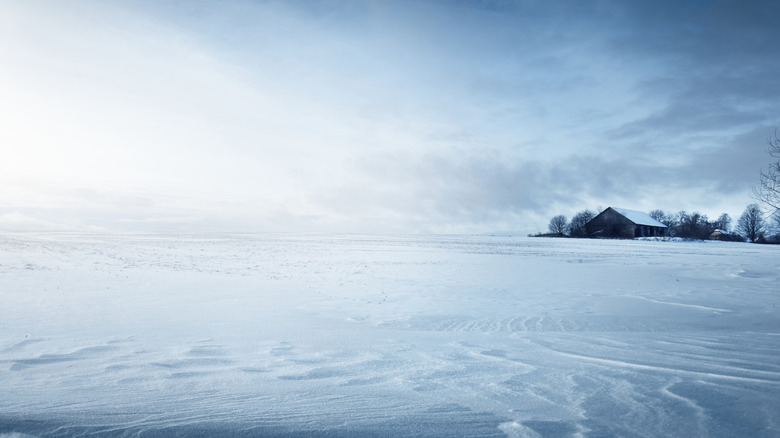
The Truth About Finland's Unique Relationship To Metal Music

The Dark Truth About The Nazi Sect Established In Chile
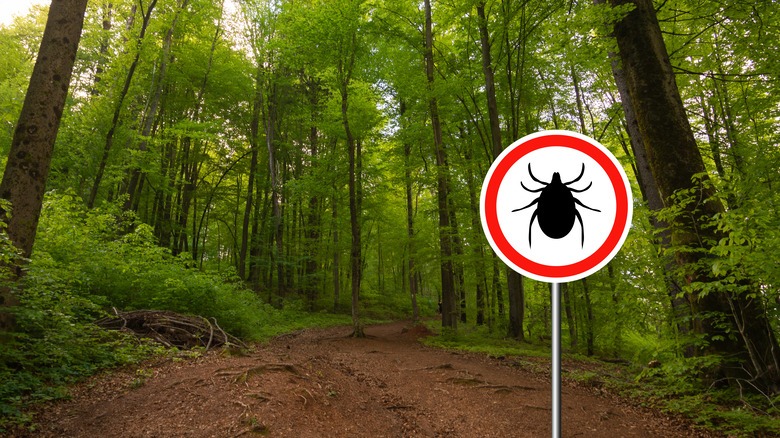
Here's What Would Happen If Ticks Went Extinct

Coulrophobia: The Truth About The Fear Of Clowns

The Tragic Fate Of Oscar Wilde's Half-Sisters
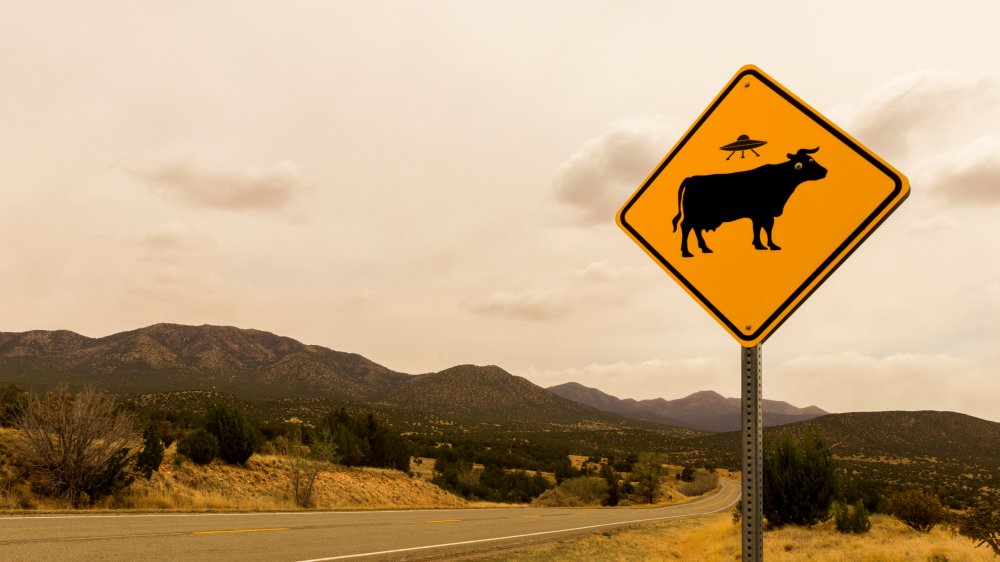
Why You Rarely See The Roswell Incident In School History Books
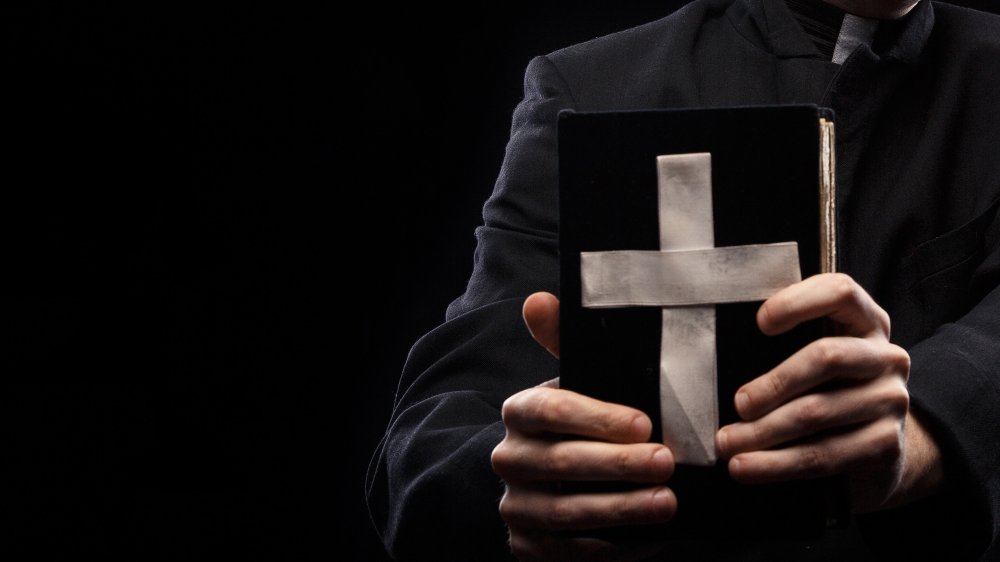
The Truth Behind The Exorcism Of Michael Taylor
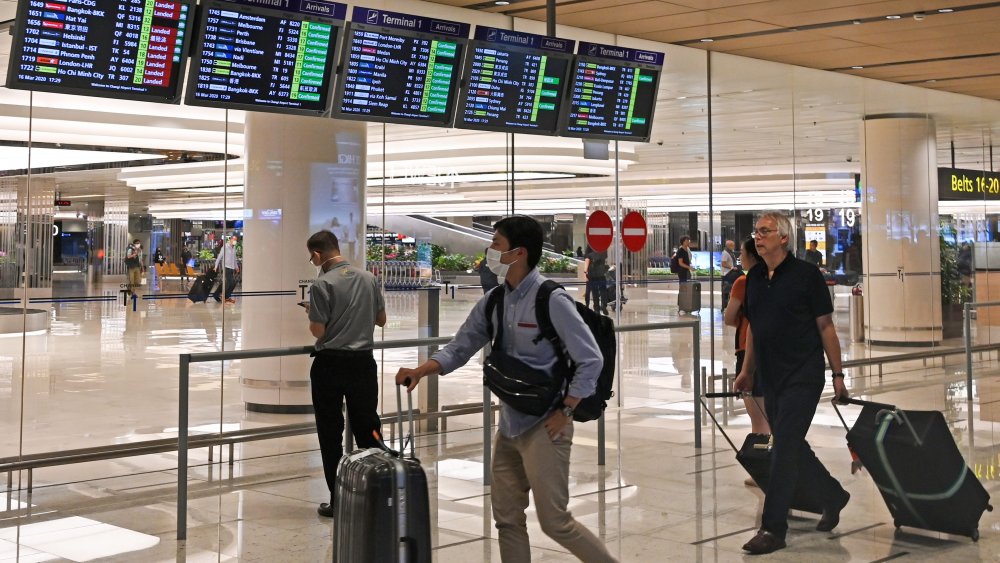
How Much Money Are Airlines Losing Per Day Right Now?

Scientists Are Using 'Tissue-Digging Nanodrills' To Kill Bacteria
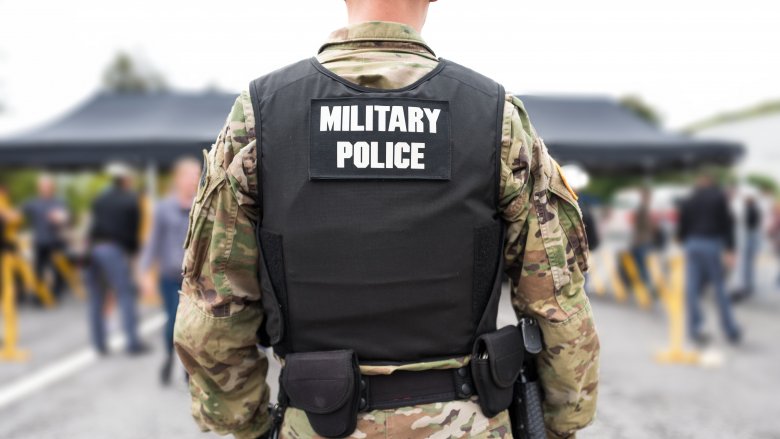
Unexplained Things That Happened On Military Bases
